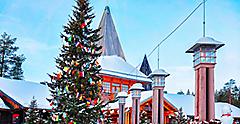Whether you are coming back on a vacation cruise or you are a first-time visitor to the twin island republic, you will be treated to a truly immersive multicultural experience reflecting the islands' rich history. African, Caribbean, East Indian, Chinese, Spanish, Middle Eastern and other cultures all coexist and are uniquely celebrated in this country, filled with not only white sand beaches but beautiful temples, diverse cuisines, languages and traditions such as the soca dance.
The History Of Soca In Trinidad Culture
One interesting entry point to understanding and appreciating Trinidad and Tobago's past and present is through music. Trinidadian musicians birthed not only the instrument most frequently associated with the Caribbean — the steel pan — but also calypso music itself. Innovation, evolution, and creativity, so pervasive in this area, have only continued to reinvent the culture, sharing new sounds, flavors, and ideas with the rest of the world.
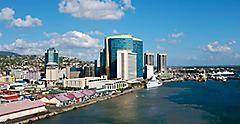
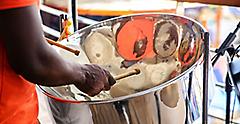
While calypso first landed in Trinidad sometime in the 1700s, imported by enslaved Africans, in the 1970s, a new style of music began to emerge called soca, or "soul of calypso." The term was originally coined by Trini musician Garfield Blackman, who took the stage name Lord Shorty. Though eventually, Blackman would move away from soca to explore other styles of music, his granddaughter, Nailah Blackman, continues the soca legacy today.
Whereas calypso is an Afro-Caribbean style of music characterized by bright and tinny melodies produced by Trinidad's national instrument, the steel pan, soca punches up the rhythm to the next level with hard-racing beats and instrumentals imported from India. The music practically drips with sweat. "It's kind of like calypso's young, teenaged bad son," musician Kees Dieffenthaler once explained to NPR.
Lord Shorty and the soca musicians that would come after him infused calypso with the East Indian influences that are so emblematic of Trinidad and Tobago, alongside so many other cultures, creating a fusion musical export as uniquely delicious as the food you'll find here.
If you happen to visit during Carnival, it's inescapable. Soca music and dancing are integral to this spectacle of color, costume, music and nonstop fetes.

Wining, Liming, And Dining In Trinidad
Of course, what is song without dance, especially when it comes to soca (soul of calypso), and especially when traveling in the Caribbean — a music and a place that practically demands audience participation? Soca takes dancing to the next level. Think of the most energetic fitness dance class you've seen, where the participants have supreme command of each body part moving in sync with the frenetic beat. In Trinidad, this could be known as the perfect "wine." "Wining" refers to soca's companion dance, which makes liberal use of the hips and backside, to say the least.
Meanwhile, "liming" refers to the art of relaxing with friends, perhaps with a bottle of locally produced Carib or Stag beer. "Wining and liming" is not just a clever phrase you're likely to hear in Trinidad and Tobago; it's a way of life.
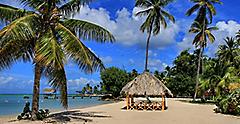
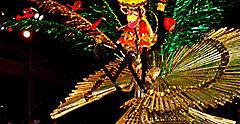
Outside of Carnival season, head to Ariapita Avenue in the Port of Spain (the very birthplace of soca) and step into the club for an unforgettable evening of dance almost any night of the week. The dance clubs here are places not just to "lime" and listen to soca but to be surrounded by its vibrations and by locals who have been raised on the music. As for the steps, don't worry too much and just let the music guide you (or see below for a few class options).
To sustain your adventures, treat yourself to doubles from a nearby cart on the avenue. Doubles are a flavor bomb of curried chickpeas encased in delicious fried bread, best enjoyed for breakfast or a late-night snack. You top it with shado beni, a spicy cilantro sauce, plus tamarind chutney, and whatever else you'd like. A Trini guide once told me, "For us, good tasting food is when you have an explosion in every bite."
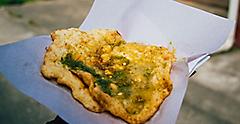
More Soca Holidays In Trinidad And Tobago
Outside of Carnival, while on vacation to Tobago, you'll find that festivals are celebrated monthly in various villages around the island, where you may find soca, as well as other traditional music and dances that pertain to culturally and historically significant events, such as the cocoa harvest.
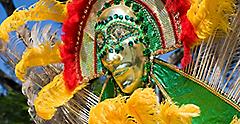
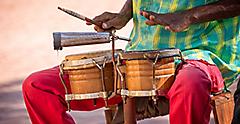
Soca Dance Lessons For Beginners
Though it's perfectly acceptable and encouraged to dance to the beat of your own steel pan while in Trinidad, you can join a class to take soca dance lessons while enriching your understanding of Trini music. Throughout Trinidad you'll find winercise classes to perfect your wine (remember: that's the soca-inspired dance in this case, not the beverage) with a full-body, instructor-led workout. And if you're interested in gearing up for soca before you leave home, many classes are also offered virtually.
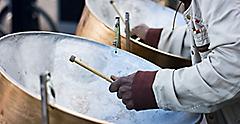
While you're visiting the islands, be sure to stop by one of the panyards for an unforgettable performance and to try out your new moves. The steel pan was invented by Trinidadians in the 1930s as a way of circumventing a British ban on drums following emancipation. Scrap metal objects like oil drums, biscuit tins and car parts were transformed into finely tuned musical instruments. You can find a list of local panyards and some of the key pan events throughout the year here.
If you're visiting Trinidad and Tobago, don't miss the enduring spirit of Trinidad's musical innovation. Make time to witness a full steel orchestra practice or performance — and you might even luck out and get an impromptu lesson.
Get Royal Deals, Sign Up Today

Getting There
Explore Our Most Affordable Itineraries
Discover Carnival and learn Soca Dancing on a cruise to Trinidad




